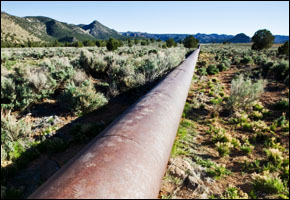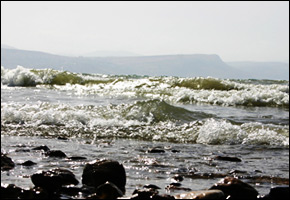India Supreme Court Again Pushes National River Linking Project to Proceed
This is the second time the court has promoted the mega-project that would link the major rivers in the north with those in the south as a way to better manage water, moving it from areas of perceived surplus to areas without sufficient supplies.
On Monday, a three-judge panel from India’s highest court ordered that the government proceed “in a time-bound manner” with a project that attempts to mitigate the effects of drought and climate change by connecting rivers in the country’s north to those in the south, according to the BBC.
The decision does not specifically state a time frame, which has led observers to draw very different conclusions about what this means for the project’s fate.
R. Maria Saleth — who specializes in water resources management and who is the director of the Madras Institute of Development Studies in Chennai, India — told Circle of Blue in an email that the court order cannot be ignored by the central government and that it would “expedite” the project.
“I doubt if work on major transfers from the Himalayan rivers to the peninsular rivers will start for another 50 years, if at all.”
–Tushaar Shah, senior fellow
International Water Management Institute
But Tushaar Shah, a senior fellow at the International Water Management Institute who has written an analysis of the river-linking project, is less sanguine about the project’s prospects.
“I doubt if work on major transfers from the Himalayan rivers to the peninsular rivers will start for another 50 years, if at all,” Shah wrote in an email to Circle of Blue.
This is the second time that India’s Supreme Court has issued a ruling on the project, which has been promoted as a way for the country to better manage its water resources by moving them from areas of perceived surplus to those without sufficient supplies. The idea of using a system of dams and canals to shift water between India’s rivers has been discussed since the 1980s.
The National Water Development Agency, tasked with carrying out the vision, was conceived in 1982 by Indira Gandhi, but the plans lay dormant for two decades.
Then following a public-interest lawsuit in 2002, the court ordered the national government to form a task force that would assess the 16 “links” in the northern, or Himalayan, section and the 14 links in the southern, or peninsular, section. In the same decision, the court ordered the full project to be completed by 2016, a timetable that has no chance of being met.
The entire project, estimated to cost $US 120 billion, would move 178 billion cubic meters (47 trillion gallons) of water from northern Himalayan rivers to the drier southern rivers via 30 diversion projects, including 3,000 storage reservoirs and 14,900 kilometers (9,200 miles) of canals, according to a report by the International Water Management Institute. (To put this in perspective: China’s similar inter-basin project, the South-North Water Transfer Project has a planned capacity of 48 billion cubic meters, or 12.7 trillion gallons.)
While the entire project may never be constructed, nine diversions are considered independent projects and could be implemented individually. Just last year, there was an agreement on the first of the 30 proposed river linkages. This first project — which includes a 73-meter (240-foot) dam and a corresponding 230-kilometer (140-mile) canal that would divert water from the Ken River, a Ganges tributary, to the Betwa basin — is expected to cost $US 1.1 billion and to take nine years to complete.
One pressing reason that India gives for the river linking project is to increase the country’s irrigation potential to meet the growing demand for grain, which, by 2050, will have to feed an estimated 1.5 billion people.
However, the project is opposed by civil society groups, who worry about people being forced from their homes; by environmental groups, who are concerned about biodiversity loss and ecological damage; and by India’s downstream neighbors, Pakistan and Bangladesh, which both showcased negative reactions to Monday’s decision in local media outlets.
The Nation newspaper in Pakistan wrote that the project would turn the country into “a barren field.” The Daily Star newspaper in Bangladesh, citing a scientific “study” from unnamed sources, said that the delta nation would face “saline death” from an encroaching sea, if India’s actions were to lower water levels in the Ganges and Brahmaputra rivers.
The full project would also need the support of Nepal and Bhutan, where regulating dams would be built.
Source: BBC, The Nation, Daily Star
Read more about river-linking plans in India on Circle of Blue:
- First Approval in India’s National Plumbing Project, Despite Possibility to Endanger Tigers: January 12, 2011
- India’s Leaders Argue Over River Linking Plan: November 3, 2009

Brett writes about agriculture, energy, infrastructure, and the politics and economics of water in the United States. He also writes the Federal Water Tap, Circle of Blue’s weekly digest of U.S. government water news. He is the winner of two Society of Environmental Journalists reporting awards, one of the top honors in American environmental journalism: first place for explanatory reporting for a series on septic system pollution in the United States(2016) and third place for beat reporting in a small market (2014). He received the Sierra Club’s Distinguished Service Award in 2018. Brett lives in Seattle, where he hikes the mountains and bakes pies. Contact Brett Walton








this is one of very good project which india needs at this stage please take it up